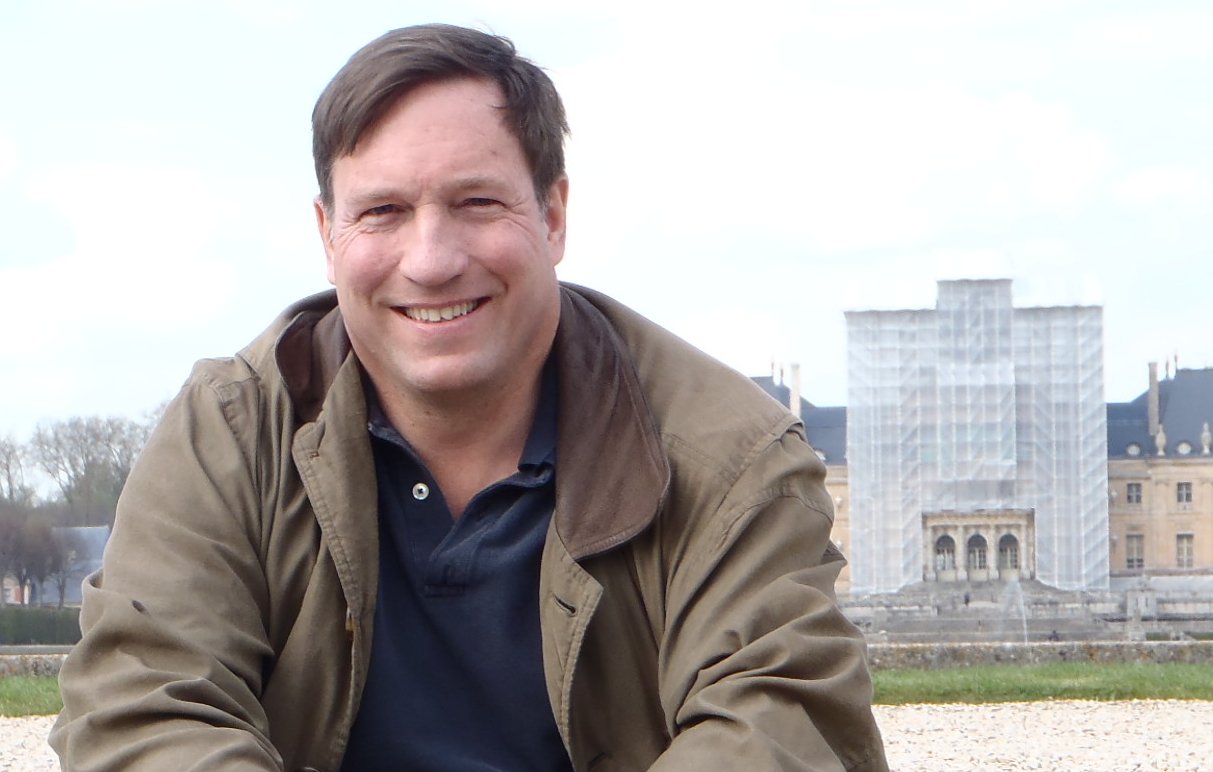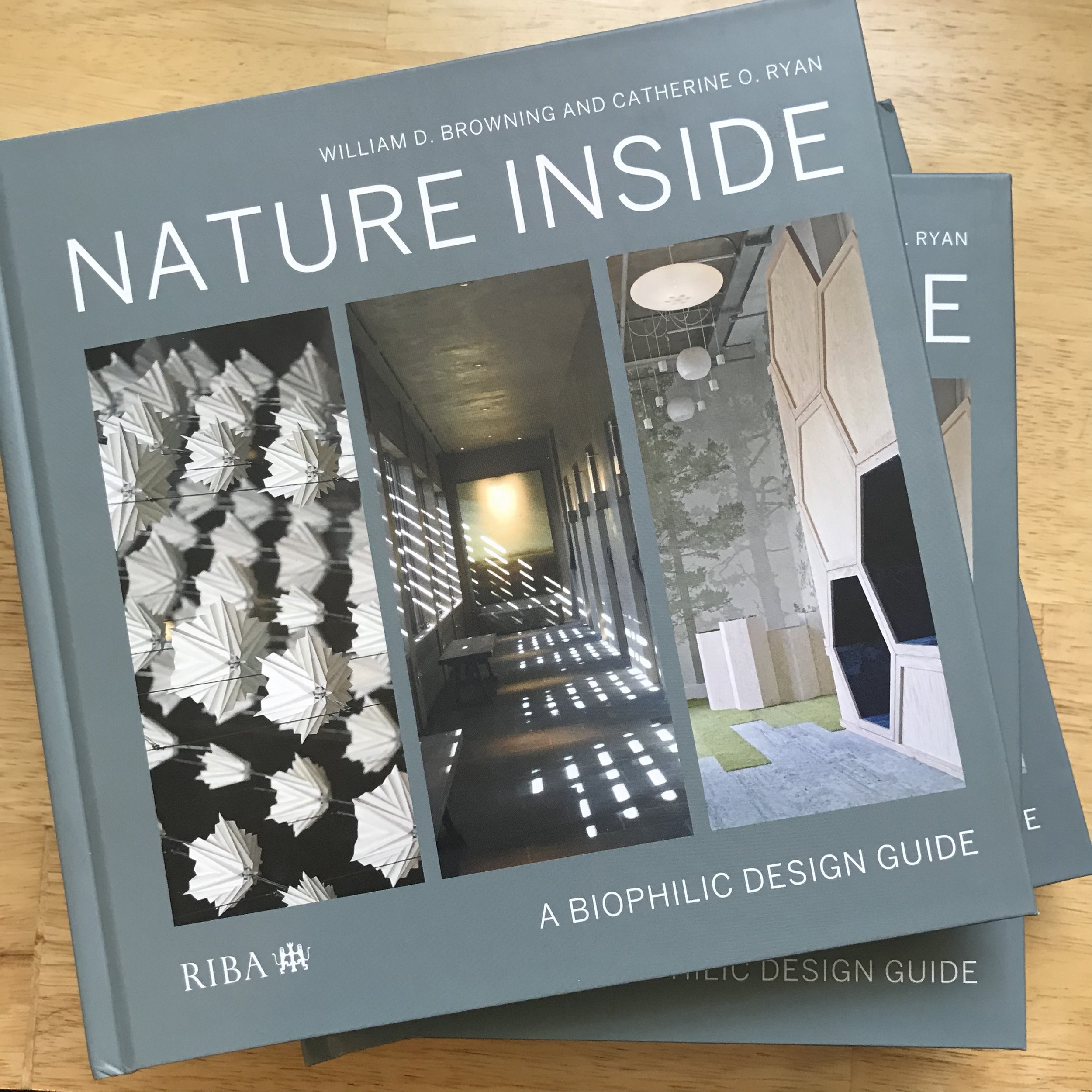Using Evidence to Bring Nature Inside
NYSID MPSS Advisor William Browning on Biophilia, the Subject of His Latest Book
William Browning is one of the green building industry’s foremost thinkers and strategists, and an advocate for sustainable design solutions at all levels of business, government, and civil society. He’s a co-founder and a principal of Terrapin Bright Green, a sustainability consulting firm that specializes in environmental strategy, biophilic design, ecological design, and innovation through biomimicry.
His company “consults on projects from the scale of an individual product to an entire ecosystem,” he says. His team has consulted on New York State’s Energy and Nature Center at Jones Beach, a 3.3-million-SF skyscraper in Kuala Lumpur that is tracking LEED Platinum and the sustainability strategies for the central business district for New Songdo, a new city in South Korea. He was a founding member of the U.S. Green Building Council’s Board of Directors. A work he coauthored with his colleague Catherine O. Ryan, 14 Patterns of Biophilic Design, gave the building industry a system for describing and applying the many facets of biophilia. His recent book, Nature Inside: A Biophilic Design Guide, also co-authored with Ryan, is already in its third printing due to the explosion of interest in biophilia during the pandemic lockdown. Browning is on the advisory board of NYSID’s MPS in Sustainable Interior Environments, and recently spoke at NYSID’s Teaching Green Symposium with Lorraine Francis. He shares a bit of his expertise here.
NYSID: What is biophilic design in theory and in practice?
William Browning: The briefest definition is that it’s design that intentionally brings experiences of nature into the built environment. These experiences are intended to support people’s health and well-being, stress reduction, improvements in cognitive function, and more. There are three main categories of biophilic design:
• “Nature in the Space,” direct experiences of nature in an interior, such as plants, water, a view, or a breeze through a window.
• “Natural Analogues,” the use of natural materials, or biomorphic forms or fractals.
• “Nature of the Space” patterns, referring to interiors that mimic spatial experiences in nature and how that impacts us physiologically and psychologically.
NYSID: The structure of your newest book, Nature Inside, is interesting. It begins with scientific and economic data on the ways biophilic design impacts human physiology, mood, and behavior. Then it launches into case studies. How did you envision people using it?
WB: The intended readers are designers. In fact, the book was commissioned by the Royal Institute of British Architects. We thought it was important for people to understand some of the science behind biophilia. A lot of designers are practicing biophilia intuitively, but it helps to understand the science behind why people make these choices, especially since different experiences of biophilic design support different outcomes for the users of the space. If the outcome that you seek is stress reduction, you use one strategy; if it’s productivity, you use a different strategy. Understanding the research behind biophilic design makes designers more effective. It also helps designers make a business case for biophilic design in their conversations with clients.
With the case studies, we wanted to start at the scale of products, then rooms, and go to the scale of neighborhoods and campuses. We look at a broad diversity of design styles and spaces from all over the world. The appendices are really important in this book; they are a series of tools intended to help designers with implementation.
Lobby at Parkroyal on Pickering, Singapore, designed by WOHA
NYSID: With the 14 patterns of biophilic design (expanded to 15 in your latest book), you give designers what you call a “pattern language.” Will you explain what you mean by that?
WB: Pattern language has been used by designers for hundreds of years, but this pattern language is a little different. Instead of being object based, it’s experience based. It’s a way to make sure users are having certain experiences within the space.
NYSID: May we drill down into one of your 15 patterns to show the extent of the research that goes into making each of these recommendations? We’re fascinated by “dynamic and diffuse light.”
WB: Sure. There are three components of dynamic and diffuse light. One has to do with having shadow and bright light. . .the opposite of uniform light in a room. Changes in light levels cause variations in the muscles of the eye. Also, if I am in an environment and staring at a short visual focus (like a computer screen), all the muscles in the eye have to contract to round the lens. We can do that for a short period of time, but eventually it will cause eye strain and fatigue, so I need to give you a distant view and variations in light to get you to look up and away to flatten the lens and relax the eye.
Tortono Brookfield Place Connector by Santiago Calatrava
Another piece of the dynamic and diffuse light is changes in the color of light over the course of the day. We know that this shift in natural light triggers a cascade of responses in the body: heart rate, temperature, blood pressure, and perhaps most significantly, the balance of serotonin and melatonin in the body. Sunlight is yellow in the morning, shifts to blue around high noon, and becomes redder in the afternoon. That midday blue, specifically 480-nanometer blue, suppresses melatonin production, which is a great thing in the middle of the day because you want to be alert. In the late afternoon, the light becomes redder and melatonin production picks up. Most LEDs, including our computer and phone screens, are made with blue chips which makes sense from an efficiency standpoint because you want to produce light at the most energetic state with short wavelengths. The problem is that if we have an environment dominated by blue light at night, we’re suppressing melatonin and making it really tough to get to sleep. Getting that color spectrum correct for the right time of day is really important for sleep cycles. There are companies that make good products that address this. Now you can find lamps with daylight and evening chips that can be adjusted throughout the day to provide better circadian lighting.
The final aspect you need to know about dynamic and diffuse light is this: The dappled light under trees is something we love as a species. That dancing pattern of light is what is known as a statistical fractal. It can be mathematically calculated, and it can be replicated in human-designed objects producing similar shapes that are repeating, but never the same. We find this calming. The brain is predisposed to be able to process this pattern, something neuroscientists call fractal fluency. When we see something like this, it results in an almost automatic reduction of stress. An example is the panel in the foyer leading into the guestrooms of the Westin Hotels. The panel creates a dappled light pattern that’s helping reduce stress the instant someone steps into the room after a long day.
NYSID: You added a 15th experience from the natural world to your pattern language for biophilia: awe. How can you define, study, and replicate awe?
Westin Room by Marriott Global Design Strategies. Photo courtesy of Marriott International
WB: We know from the work of neuroscientists watching the awe experience in the brain that nearly the entire frontal cortex lights up and then activity comes to a halt. It’s an experience of being overwhelmed, and that’s really what happens, the brain becomes overloaded. The eyes open wider, the heart rate slows, the breath slows, and then we see this interesting cascade of psychological responses. We see more prosocial behavior. People tend to be more humble and charitable after having that awe experience.
So how do you create the experience of awe? Most people think that awe is something that happens spatially with grand and vast spaces, such as the experience of walking into the Grand Canyon or a great cathedral, and it does. But Frank Lloyd Wright did it with small houses using a technique he called compression and release. A great example is Frank Lloyd Wright’s Pope-Leighey House in Virginia, which is open to the public. You enter under a porte cochère barely 8 ft. high, through a foyer hallway, going forward to an office and kitchen, to dining and living room beyond it, into a narrow space with extremely low ceilings, and then you step down into this open space with a cantilevered roof plane over you. . .the roof plane seems to be floating on light. It’s astonishing. It’s a tiny space, but through what Wright called compression and release, it induces awe. Usually spaces that induce awe have a really great transition. Awe is usually a spatial experience.
NYSID: Why have you become a member of the advisory board of NYSID’s Master of Professional Studies in Sustainable Interior Environments?
WB: The reason for doing this with NYSID is that there are very few programs out there in sustainable interior design. It’s important to support a really good one like NYSID’s because we want to see more people out there being trained in this work. There are only a handful of instructors in architecture and design programs who specifically teach biophilic design, and this is knowledge that improves lives.





